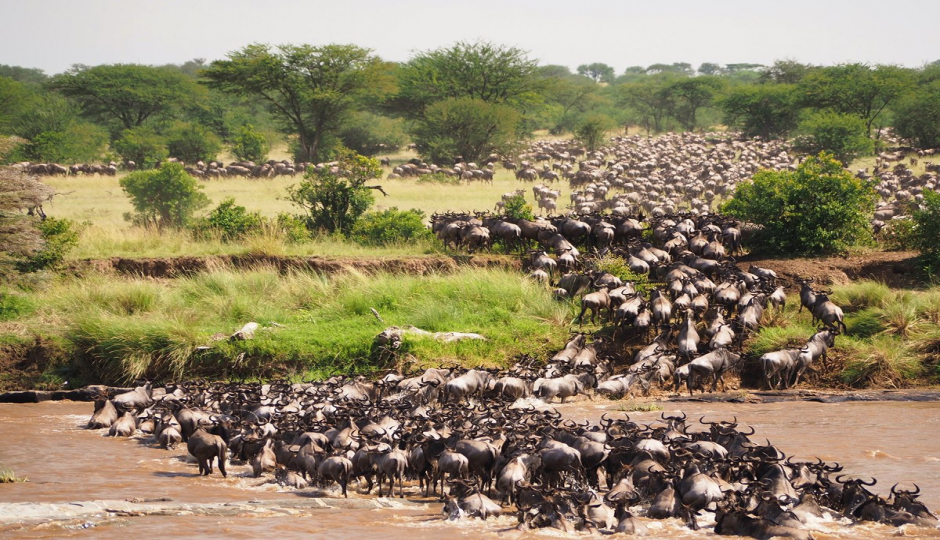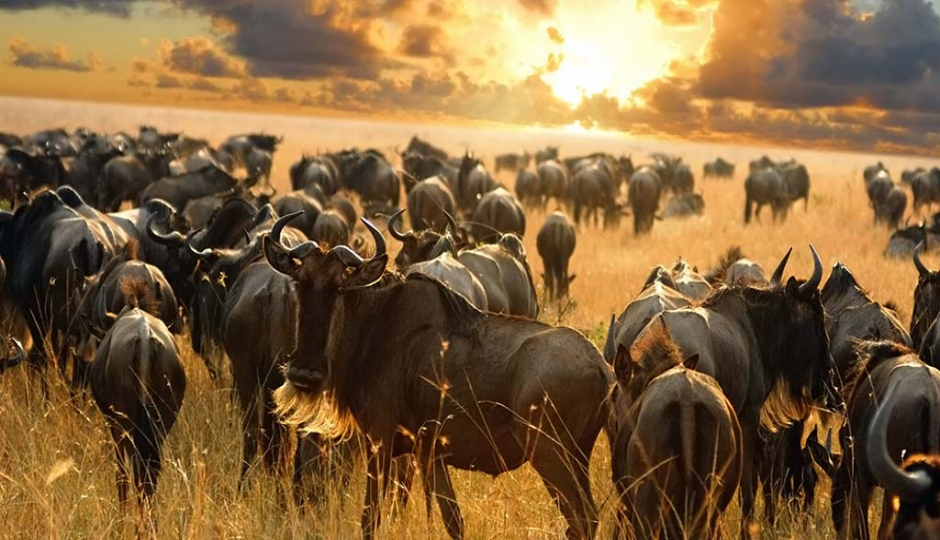







The Great Wildebeest Migration in the Serengeti is undoubtedly one of the most awe-inspiring natural spectacles on Earth. This mesmerizing annual event is a prime example of the intricate balance of nature, showcasing the sheer force of instinct, survival, and the symbiotic relationship between species.
The Serengeti, a vast ecosystem in East Africa that spans across Tanzania and Kenya, serves as the stage for this remarkable wildlife phenomenon. The migration primarily involves two million wildebeests, as well as a multitude of zebras, gazelles, and other herbivores. The migration is driven by the search for greener pastures and water sources as the seasons change, and it's often described in terms of a cyclical journey.
The journey begins as the short rains fall in November, revitalizing the parched land and kickstarting new growth. The wildebeests gather in the southern Serengeti to graze on the fresh vegetation that emerges. As the dry season approaches and the grasses become sparse, the herds instinctively know it's time to move on. By around February, millions of wildebeests begin their migration towards the western and northern parts of the Serengeti, and eventually into the Maasai Mara National Reserve in Kenya.
The crossing of the Grumeti and Mara rivers during this migration is arguably one of the most thrilling aspects of the entire event. These rivers are infested with hungry crocodiles and other predators, making the river crossings incredibly perilous. The wildebeests' leap into the turbulent waters is a spectacle of survival, and determination, and a testament to the will to overcome obstacles for the sake of sustenance.
Interestingly, the wildebeest migration isn't just about survival. It's also a crucial element in maintaining the ecosystem's health. The migration helps to rejuvenate the grasslands as the herds graze, trample, and fertilize the land. This has a positive impact on the diversity and abundance of plant species, which in turn supports a wide range of herbivores and carnivores, creating a delicate web of interdependence.
Predators like lions, leopards, cheetahs, and hyenas closely follow the migrating herds, capitalizing on the abundance of easy prey. The migration, therefore, sustains an entire ecosystem, providing a fascinating example of how different species interact and rely on each other for survival.
The Great Wildebeest Migration is not just a biological phenomenon; it's a cultural and economic one too.
The annual event draws wildlife enthusiasts, photographers, researchers, and tourists from around the world, contributing significantly to the local economies of Tanzania and Kenya. Safari tours centered around witnessing the migration provide a unique opportunity for people to connect with nature in its rawest and most dramatic form.
In conclusion, the Wildebeest Migration in the Serengeti is a living testament to the power of nature and the intricate dance of life that occurs on our planet. It reminds us of the delicate balance of ecosystems and the complex relationships that exist within them. The migration is a reminder of the beauty, resilience, and interconnectedness of all living beings, and witnessing it is an experience that leaves a lasting impression on those fortunate enough to behold it.






What is a Reasonable Tanzania Safari Itinerary?
How Do I Plan a Kilimanjaro Climb?
To book your adventure, simply send us an email detailing your desired experience—whether it's climbing Mount Kilimanjaro, going on a Tanzania safari, or enjoying the Zanzibar beach.
We'll promptly respond with all the information you need to finalize your plans. Plus, we offer the convenience of online payment to make the process even smoother.
View Packages